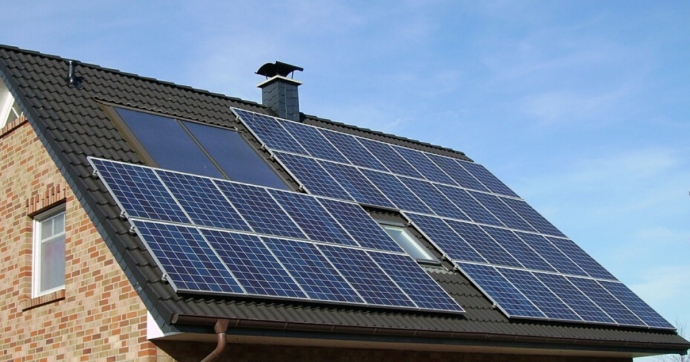By Harald Desing (reproduced from Medium)
The window for action is rapidly getting smaller, so I was wondering: can we accelerate the energy transition and so reduce climate risks?
Considering available energy as the only limiting factor, the transition can be surprisingly fast, in the order of years and not decades. However, energy storage is decisive: the more we want, the slower the transition gets, because current storage technologies are energetically expensive either to build — like batteries — or to operate — like synthetic fuels. We can address this dilemma in two ways: either by investing in the development of new storage technologies with both low embodied energy and high efficiency. But, technology development takes time, which we haven’t any more. Or, we align our energy demand to renewable supply as best as we can, minimizing the demand for storage.
Over the past decades, we have become accustomed to use energy whenever we want it. This jeopardizes a fast transition, as matching our current consumption patterns to renewable supply would require a tremendous amount of storage. In the transition debate, this is often regarded as the key barrier to reach a fossil-free energy system.
In contrast to biophysical limitations for saving a hospitable climate, our consumption patterns are not a given. We can and we need to rethink fundamentally the way we use energy. Following the course of the sun, just like sunflowers do, we can schedule our most energy intensive activities around midday and summer, while reducing the demand at night and in winter to its bare minimum.
Such a paradigm shift primarily requires a different vision; a vision that breaks the chains of ever faster, higher, bigger, better; keeping us in a futile spiral of environmental destruction, mental distress, greed and competition. With more technology, more production and working harder, we will neither save the planet nor create a desirable future.
Instead, we need less of everything physical and more of everything human. I will introduce here the vision of a sunflower society, which aims for achieving climate stability through the following principles:
Avoiding energy demand also avoids storing it: sufficiency in lifestyles; improving energy efficiency for demand that is hard to shift, such as lighting in the night.
Provide all energy through solar PV on the already sealed surface of buildings, parkings and other infrastructure: this avoids land conversion and does not impair wildlife; building oversize PV capacity comes at much less energy and material expenses and can help avoiding storage through curtailment.
Concentrate energy demand around peak sun hours: stimulated by hourly energy tariffs that reflect the true costs of storage; shifting from continuous to batch operations of industrial processes; changing behaviour patterns and concentrate physical activities to sun hours.
Use technologies that do not require storage: for example, grid-connected modes of transport, such as trains and trolleybuses, instead of battery-electric vehicles.
Shift active energy demand to passive embodied energy in materials: upgrade homes to passive houses; read books, shared through libraries, instead of online content in the evenings
As we tend to perceive “less” as sacrifice, I’m convinced that any vision for a sustainable future needs to be perceived as a true step forward. In contrast to the prevailing techno-optimist narrative, the vision of a sunflower society can lead to a substantial increase in everything that truly matters in life: quality time, cooperation, community, recognition, support, friendship, love,…
Less is more — for example, living in a small space reduces energy demand per person fundamentally. And, one has less space to pile up useless stuff, reducing consumption and all worries associated with it in return. It reduces the time spent working to afford one’s home and for keeping it in good repair. Simply, there is more quality time and mental capacity available for oneself, one’s family and community.
Reducing and shifting mobility has a similar effect. Travelling and moving around are essential for opening and enriching one’s mind as well as building and interacting in communities. However, this can be much better achieved in slow and public means of transportation: the journey is the reward. Meeting people you would have otherwise not met, experiencing the distance and nature you would have otherwise just rushed by leaves one certainly with a richer and different experience than expected. And needless to say, not owning a car saves you a lot of lost time for driving, working to afford it, caring about it, sitting in traffic jams, searching for parking,… On top of that, public transport has about a hundred to thousand times lower risks than driving one’s own car. And, what speaks against renting or sharing a car for those occasions when one really needs it?
Imagine car free cities: what an improvement in life quality could that be! Imagine the public space we can reclaim for our communities: urban gardening, parks, playgrounds, sports areas, open-air festivities, flea markets — all in front of our doorsteps. No air pollution, no noise pollution, no car accidents — who can truly say that this would be a step backward rather than a huge leap forward?
Building a sunflower society will enable us to get rid of fossil fuels in a matter of years, reducing cumulative carbon emissions and consequently climate risks. It will further free up capacity for the next gargantuan task after the urgent energy transition: removing excess CO2 from the atmosphere and restore ecosystems.












